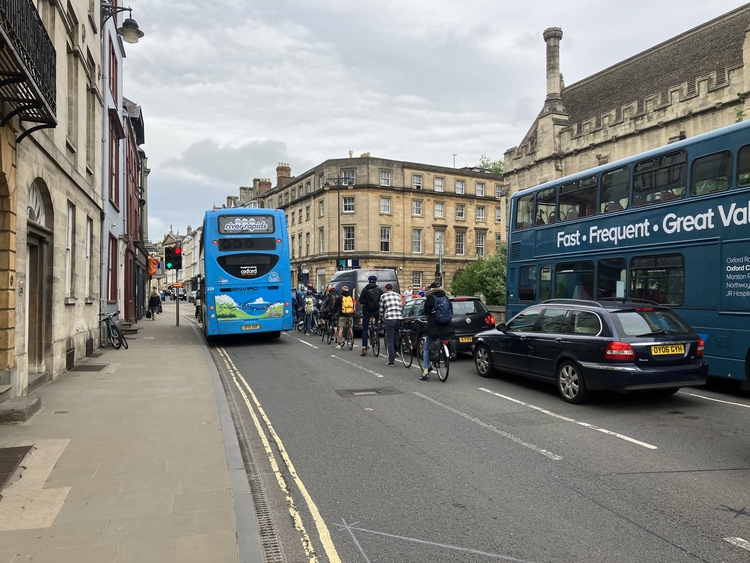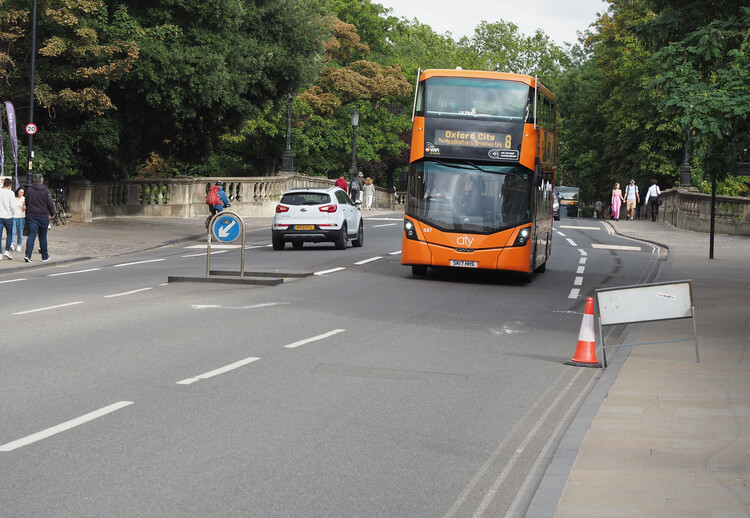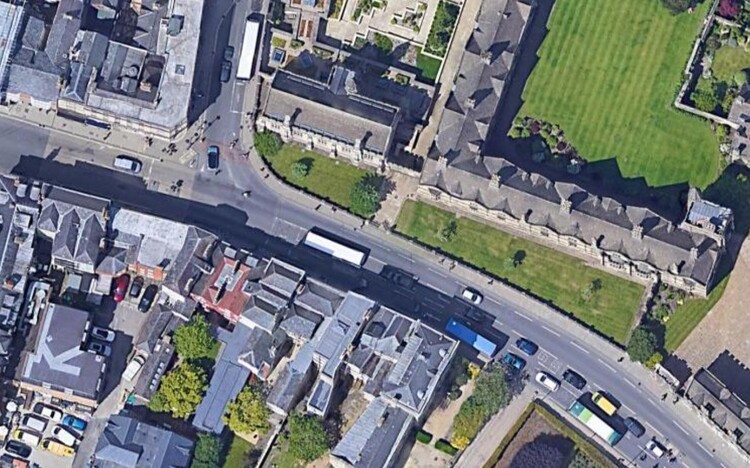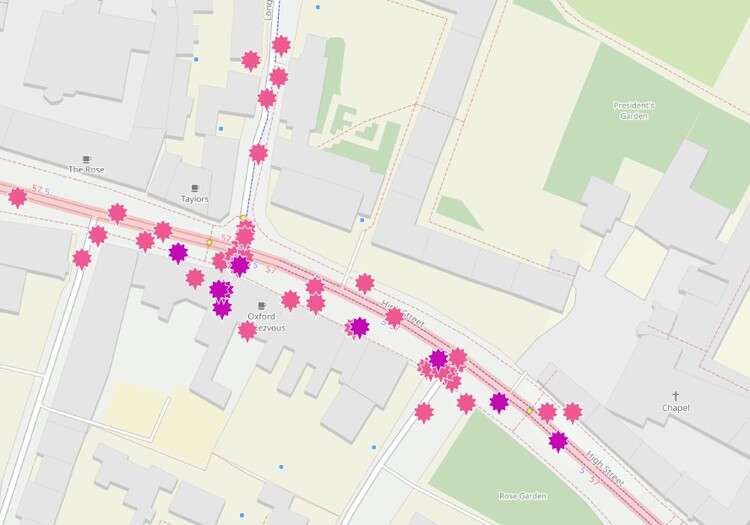The junction of Longwall St and High St, in Oxford, poses some unusual design challenges. Along with Magdalen Bridge and the Plain roundabout, it is a key bottleneck in Oxford's transport network — this segment is probably the second busiest cycle route in the UK and likely the second busiest bus route. There are huge problems with this junction as it is, but the core schemes in the forthcoming Central Oxfordshire Transport Strategy offer a chance to redesign it.

Peak (term time, working day) two-way traffic flows on Magdalen Bridge are roughly 2,000 buses/day, 10,000 cars, 9,000 cycles, and 9,000 pedestrians. This is "tidal" and the peaks are high: I've seen a 15-minute count of 415 cycles on Magdalen Bridge in morning peak (from the Vivacity camera that used to operate there). Motor vehicles are barred from turning left from High into Longwall or right from Longwall into High, and few cycles make the former movement, so the flows are quite simple, basically partitioning traffic on Magdalen Bridge between Longwall and High. Coming from Magdalen Bridge, almost all the buses go up High St, with only Science Transit and OpenTop Tour buses (12 an hour) and some coaches using Longwall St. The cycle and foot traffic is split between High and Longwall.
The problems with this junction are obvious. Cycling is the worst provided for, with people turning right into Longwall sandwiched between buses and cars, but the footways are too narrow for peak pedestrian flows and the buses get congested.

The plan (in the Central Oxfordshire Transport Strategy) is to put a traffic filter on St Cross St, at the other end of Longwall St, which would (when operating) reduce traffic on Longwall St. That will not reduce private motor traffic enough for a junction redesign, however - the traffic filter here needs to be a proper bus gate like the one on High St (but operating 24 hours).
How would one redesign this junction if the traffic flows on Magdalen Bridge are now 2,000 buses/day, of which maybe 150 are to/from Longwall, 10,000+ cycles and 10,000 pedestrians, split between Longwall and High, and some (1,000?) taxis/service/delivery vehicles?
The major conflict now would be cycles heading from Magdalen Bridge to Longwall crossing first over westbound buses, presumably to some kind of waiting area, and then in front of eastbound buses/taxis and cycles.
There are serious space constraints. It is about 15 metres across High St here, and we need to support footways, cycle tracks, bus lanes, and probably some kind of waiting area for turning cycles — the goal is comfortable walking, safe and accessible cycling, and as little delay to buses as possible. (It is also 9 metres across the narrowest stretch of Longwall St, and finding some way to make this better for walking and cycling would be a bonus.)
One way to simplify this junction would be to remove the pedestrian crossing of High St at this junction, replacing it with two zebra crossings, one to the west at the Merton St junction and one to the east at the Rose Lane junction. The central island would then be unnecessary. And the separate right-hand turn lane clearly has to go.
The obvious solution then would be for the junction to operate without signals, but it's not clear if traffic volumes will be low enough for that to work. This might need Longwall St restricted to local buses.



I like your suggestion of two zebra crossings replacing the one pedestrian crossing with island. From my experience, vehicles coming along the left hand lane heading into Oxford from Magdalen bridge tend to go through that pedestrian crossing section quite fast, and I would hope that the zebra crossings might help slow people down. I do worry that a junction without signals might be more intimidating for less experienced cyclists turning right onto Longwall, though. I’m very experienced, and I find waiting in the middle of the road for a gap in the traffic to be uncomfortable a lot of the time.